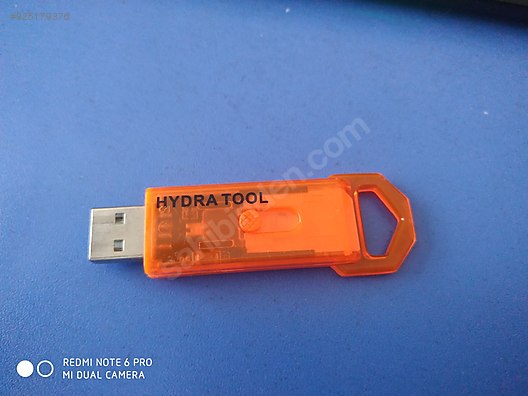Hydra Description
Hydra -P pass.txt target cisco-enable (direct console access) hydra -P pass.txt -m cisco target cisco-enable (Logon password cisco) hydra -l foo -m bar -P pass.txt target cisco-enable (AAA Login foo, password bar) cvs. Module cvs is optionally taking the repository name to attack, default is '/root' firebird. Hydra is a parallelized login cracker which supports numerous protocols to attack. It is very fast and flexible, and new modules are easy to add. This tool makes it possible for researchers and security consultants to show how easy it would be to gain unauthorized access to.
Hydra-Tech International is a Calgary, Alberta, Canada based manufacturer of large hydraulic jacks and specialized hydraulic tools providing lifting and specialized tool solutions for the Railway, Mining and Construction Industries. This is the result of the combination of ideas based on the years of research and experiences in mobile solutions development. Our main goal is to provide and give users the quality and best solutions in the market. Hydra Tool MTK Module - Mediatek Overtake. Hydra MTK v1.0.3.30 Added BROM Port-Dump Preloader Flash Init.This function will fix booting issue, if.
A very fast network logon cracker which support many different services.
Currently this tool supports the following protocols: Asterisk, AFP, Cisco AAA, Cisco auth, Cisco enable, CVS, Firebird, FTP, HTTP-FORM-GET, HTTP-FORM-POST, HTTP-GET, HTTP-HEAD, HTTP-POST, HTTP-PROXY, HTTPS-FORM-GET, HTTPS-FORM-POST, HTTPS-GET, HTTPS-HEAD, HTTPS-POST, HTTP-Proxy, ICQ, IMAP, IRC, LDAP, MS-SQL, MYSQL, NCP, NNTP, Oracle Listener, Oracle SID, Oracle, PC-Anywhere, PCNFS, POP3, POSTGRES, RDP, Rexec, Rlogin, Rsh, RTSP, SAP/R3, SIP, SMB, SMTP, SMTP Enum, SNMP v1+v2+v3, SOCKS5, SSH (v1 and v2), SSHKEY, Subversion, Teamspeak (TS2), Telnet, VMware-Auth, VNC and XMPP.
Homepage: https://www.thc.org/thc-hydra/
Author: Van Hauser, Roland Kessler
License: AGPL-3.0
Hydra Help
Syntax:
Options:
Hydra bruteforce password generation option usage:
Examples:
Hydra Supported Protocols
Supported protocols:
- asterisk
- afp
- cisco
- cisco-enable
- cvs
- firebird
- ftp
- ftps
- http-head
- https-head
- http-get
- https-get
- http-post
- https-post
- http-get-form
- https-get-form
- http-post-form
- https-post-form
- http-proxy
- http-proxy-urlenum
- icq
- imap
- imaps
- irc
- ldap2
- ldap2s
- ldap3
- ldap3s
- ldap3-crammd5
- ldap3-crammd5s
- ldap3-digestmd5
- ldap3-digestmd5s
- mssql
- mysql
- nntp
- oracle-listener
- oracle-sid
- pcanywhere
- pcnfs
- pop3
- pop3s
- postgres
- rdp
- redis
- rexec
- rlogin
- rsh
- rtsp
- s7-300
- sip
- smb
- smtp
- smtps
- smtp-enum
- snmp
- socks5
- ssh
- sshkey
- svn
- teamspeak
- telnet
- telnets
- vmauthd
- vnc
- xmpp
Options of Hydra Supported protocols
cisco
Module cisco is optionally taking the keyword ENTER, it then sends an initial ENTER when connecting to the service.
cisco-enable
Module cisco-enable is optionally taking the logon password for the cisco device
Note: if AAA authentication is used, use the -l option for the username and the optional parameter for the password of the user.
Examples:
cvs
Module cvs is optionally taking the repository name to attack, default is '/root'
firebird
Module firebird is optionally taking the database path to attack, default is 'C:Program FilesFirebirdFirebird_1_5security.fdb'
http-get, https-get, http-post, https-post
Module http-get requires the page to authenticate.
For example: '/secret' or 'http://bla.com/foo/bar' or 'https://test.com:8080/members'
http-get-form, https-get-form, http-post-form, https-post-form
Module http-get-form requires the page and the parameters for the web form.
By default this module is configured to follow a maximum of 5 redirections in a row. It always gathers a new cookie from the same URL without variables The parameters take three ':' separated values, plus optional values.
(Note: if you need a colon in the option string as value, escape it with ':', but do not escape a ' with '.)
Syntax:
- First is the page on the server to GET or POST to (URL).
- Second is the POST/GET variables (taken from either the browser, proxy, etc. with usernames and passwords being replaced in the '^USER^' and '^PASS^' placeholders (FORM PARAMETERS)
- Third is the string that it checks for an *invalid* login (by default). Invalid condition login check can be preceded by 'F=', successful condition login check must be preceded by 'S='. This is where most people get it wrong. You have to check the webapp what a failed string looks like and put it in this parameter!
The following parameters are optional:
C=/page/uri
to define a different page to gather initial cookies from
(h|H)=My-Hdr: foo
to send a user defined HTTP header with each request
^USER^ and ^PASS^ can also be put into these headers!
Note: 'h' will add the user-defined header at the end regardless it's already being sent by Hydra or not.
'H' will replace the value of that header if it exists, by the one supplied by the user, or add the header at the end.
Note that if you are going to put colons (:) in your headers you should escape them with a backslash (). All colons that are not option separators should be escaped (see the examples above and below).
You can specify a header without escaping the colons, but that way you will not be able to put colons in the header value itself, as they will be interpreted by hydra as option separators.
Examples:

http-proxy
Hydra Tool Parker
Module http-proxy is optionally taking the page to authenticate at.
Default is http://www.microsoft.com/)
Basic, DIGEST-MD5 and NTLM are supported and negotiated automatically.
http-proxy-urlenum
Module http-proxy-urlenum only uses the -L option, not -x or -p/-P option. The -L loginfile must contain the URL list to try through the proxy. The proxy credentials cann be put as the optional parameter, e.g.
imap, imaps
Module imap is optionally taking one authentication type of: CLEAR or APOP (default), LOGIN, PLAIN, CRAM-MD5, CRAM-SHA1, CRAM-SHA256, DIGEST-MD5, NTLM
Additionally TLS encryption via STARTTLS can be enforced with the TLS option.
Example: imap://target/TLS:PLAIN
irc
Module irc is optionally taking the general server password, if the server is requiring one and none is passed the password from -p/-P will be used
ldap2, ldap2s, ldap3, ldap3s, ldap3-crammd5, ldap3-crammd5s, ldap3-digestmd5, ldap3-digestmd5s
Module ldap2 is optionally taking the DN (depending of the auth method choosed
Note: you can also specify the DN as login when Simple auth method is used).
The keyword '^USER^' is replaced with the login.
Special notes for Simple method has 3 operation modes: anonymous, (no user no pass), unauthenticated (user but no pass), user/pass authenticated (user and pass).
So don't forget to set empty string as user/pass to test all modes.
Hint: to authenticate to a windows active directy ldap, this is usually cn=^USER^,cn=users,dc=foo,dc=bar,dc=com for domain foo.bar.com
mysql
Module mysql is optionally taking the database to attack, default is 'mysql'
nntp
Module nntp is optionally taking one authentication type of: USER (default), LOGIN, PLAIN, CRAM-MD5, DIGEST-MD5, NTLM
oracle-listener
Module oracle-listener / tns is optionally taking the mode the password is stored as, could be PLAIN (default) or CLEAR
pop3, pop3s
Module pop3 is optionally taking one authentication type of: CLEAR (default), LOGIN, PLAIN, CRAM-MD5, CRAM-SHA1, CRAM-SHA256, DIGEST-MD5, NTLM.
Additionally TLS encryption via STLS can be enforced with the TLS option.
Example: pop3://target/TLS:PLAIN
postgres
Module postgres is optionally taking the database to attack, default is 'template1'
rdp
Module rdp is optionally taking the windows domain name.
For example:
s7-300

Module S7-300 is for a special Siemens PLC. It either requires only a password or no authentication, so just use the -p or -P option.
smb
Module smb default value is set to test both local and domain account, using a simple password with NTLM dialect.
Note: you can set the group type using LOCAL or DOMAIN keyword or other_domain:{value} to specify a trusted domain.

You can set the password type using HASH or MACHINE keyword (to use the Machine's NetBIOS name as the password).
You can set the dialect using NTLMV2, NTLM, LMV2, LM keyword.
Example:
Hydra Tool Crack 2021
smtp, smtps
Module smtp is optionally taking one authentication type of: LOGIN (default), PLAIN, CRAM-MD5, DIGEST-MD5, NTLM
Additionally TLS encryption via STARTTLS can be enforced with the TLS option.
Example: smtp://target/TLS:PLAIN
smtp-enum
Module smtp-enum is optionally taking one SMTP command of: VRFY (default), EXPN, RCPT (which will connect using 'root' account) login parameter is used as username and password parameter as the domain name
For example to test if john@localhost exists on 192.168.0.1:
snmp

Module snmp is optionally taking the following parameters:
To combine the options, use colons (':'), e.g.:
sshkey
Module sshkey does not provide additional options, although the semantic for options -p and -P is changed:
- -p expects a path to an unencrypted private key in PEM format.
- -P expects a filename containing a list of path to some unencrypted private keys in PEM format.
svn
Module svn is optionally taking the repository name to attack, default is 'trunk'
telnet, telnets
Module telnet is optionally taking the string which is displayed after a successful login (case insensitive), use if the default in the telnet module produces too many false positives
xmpp
Module xmpp is optionally taking one authentication type of: LOGIN (default), PLAIN, CRAM-MD5, DIGEST-MD5, SCRAM-SHA1
Note, the target passed should be a fdqn as the value is used in the Jabber init request, example: hermes.jabber.org
Hydra Usage Example
Attempt to login as the root user (-l root) using a password list (-P /usr/share/wordlists/metasploit/unix_passwords.txt) with 6 threads (-t 6) on the given SSH server (ssh://192.168.1.123):
Attempt to login as the user (-l user) using a password list (-P passlist.txt) on the given FTP server (ftp://192.168.0.1):
Attempt to login on the given SSH servers (ssh) from the list (-M targets.txt) using a user list (-L logins.txt) and password list (-P pws.txt):
Attempt to login on the given FTP servers on the given subnet (ftp://[192.168.0.0/24]/) as the user admin (-l admin) and the password password (-p password):
Attempt to login on the given mail server (imap://192.168.0.1/), using IMAP protocol with a user list (-L userlist.txt) and the password defaultpw (-p defaultpw), taking the authentication type PLAIN:
Attempt to login on the given mail server using POP3S on the given IPv6 (-6) address 2001:db8::1, on port 143 using the credential list 'login:password' from the defaults.txt file (-C defaults.txt) taking the authentication type DIGEST-MD5 and enforced TLS encryption via STLS (TLS).
xHydra (GUI for THC-Hydra)
xhydra is Gtk+2 frontend for thc-hydra.
To start xHydra GUI issue:
Tools included in the hydra package
- hydra – Very fast network logon cracker
- pw-inspector – Reads passwords in and prints those which meet the requirements
Help pw-inspector
PW-Inspector reads passwords in and prints those which meet the requirements. The return code is the number of valid passwords found, 0 if none was found. Use for security: check passwords, if 0 is returned, reject password choice.
Use for hacking: trim your dictionary file to the pw requirements of the target.
Syntax:
How to install Hydra
The program is pre-installed on Kali Linux.
Installation on Linux (Debian, Mint, Ubuntu)
Hydra Screenshots
Download Hydra Hacking Tool
Hydra Tutorials
Coming soon…
Related tools
- patator (97.3%)
- oclHashcat (52.9%)
- hashcat (Hashcat & oclHashcat) (52.9%)
- Medusa (52.9%)
- John the Ripper (52.9%)
- CUPP (RANDOM - 50.9%)